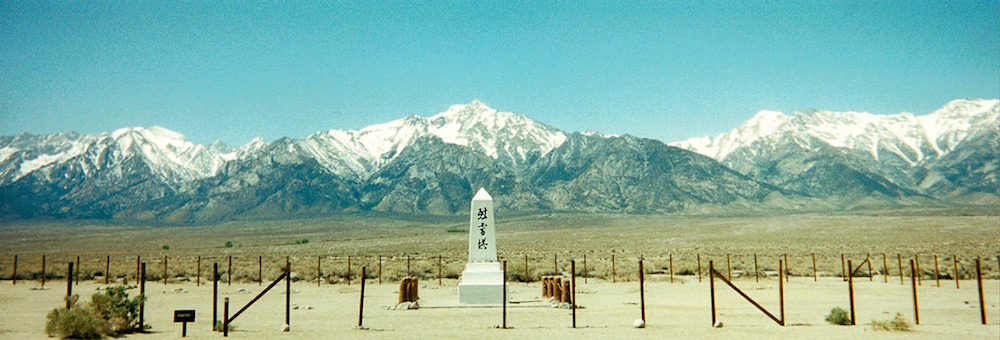By Marya Bangee
The morning of the 100th day of Trump’s presidency, I found myself on a bus heading to a concentration camp. To be more specific, I was headed toward Manzanar, the camp where more than 10,000 Japanese-Americans were held during World War II. I was one of a thousand people who were visiting the camp on the 75th anniversary of Executive Order 9066, the 1942 order that called for the interment of anyone of Japanese ancestry living on the West Coast.
As a Muslim-American, the day’s lesson felt relevant and personal to me in a new way. In today’s political climate, we must recognize the parts of our history that we would rather forget. We must realize that a wave of fear and hatred has swept this country before, with profound consequences.
Executive Order 9066:
“… by virtue of the authority vested in me as President of the United States, and Commander in Chief of the Army and Navy, I hereby authorize and direct the Secretary of War … to prescribe military areas in such places … from which any or all persons may be excluded, and with respect to which, the right of any person to enter, remain in, or leave shall be subject to whatever restrictions the Secretary of War or the appropriate Military Commander may impose in his discretion …”
Franklin D. Roosevelt
The White House
February 19, 1942
As a result of Executive Order 9066, approximately 120,000 men, women, and children of Japanese ancestry were evicted from the West Coast of the United States and held in internment camps across the country. There were 10 camps in all; Manzanar is the most well known.
I’ve visited Manzanar before. After 9/11, I felt it was important to learn more about the experiences of Japanese-Americans during World War II. I live near Los Angeles, and Manzanar is only a four-hour drive away, in the dusty Owens Valley, nestled at the foot of the stunning Sierra Nevada Mountains.
I remember that was the thing that struck me, when I first visited Manzanar — the vast, beautiful landscape. The purple mountains seem to touch the sky. There was a thick layer of dust that clogged your throat, making it hard to breathe.
On the 100th day of the still-young presidency, we listened to stories from survivors of the camps. They spoke about sleeping on iron cots, about snakes coming through cracks in the wooden floor, about falling in love in public because there was no such thing as privacy.
People tried to forget those years. People lived, died, and were born in the camps. One man asked, “If you were born in camp, what did you put on public forms?” Place of birth: Manzanar concentration camp.
In the evening, we sat in small circles at Lone Pine High School, sharing the moments that had struck us throughout the day. An elderly woman shared she was a resident of the local town. “I remember when they wanted to designate Manzanar as a historic site,” she said. “Many people in town were against it. There was a lot of suspicion back then. I remember the town hall meeting where a Japanese-American veteran stood up and eloquently made a case for the monument. He was being yelled down by the town people. I told my husband I had to say something. I was so scared. But I went to the front of the room and talked about my relatives who were killed in the Holocaust. I still don’t remember what I said. As I walked back to my seat, the Japanese-American veteran took a badge from his cap, put it into my hand, and told me, ‘It’ll be okay, sister.’ That struck me — I was his sister.”
In this dusty, almost forgotten valley in Central California lies a reminder of an ugly period in American history. A shining white marble monument stands in a graveyard for those who died here. We must remember this period in our history.
In 2017, America’s leader is once again talking about erecting walls and establishing travel bans. Fear can make neighbors turn against neighbors, with consequences that harm and haunt us all. While on the pilgrimage Warren Furutani, former California State Assemblyman and long-time community activist, reminded us “democracy is fragile.”
Fragile, yes, but also resilient — if we heed the lessons of our past.


